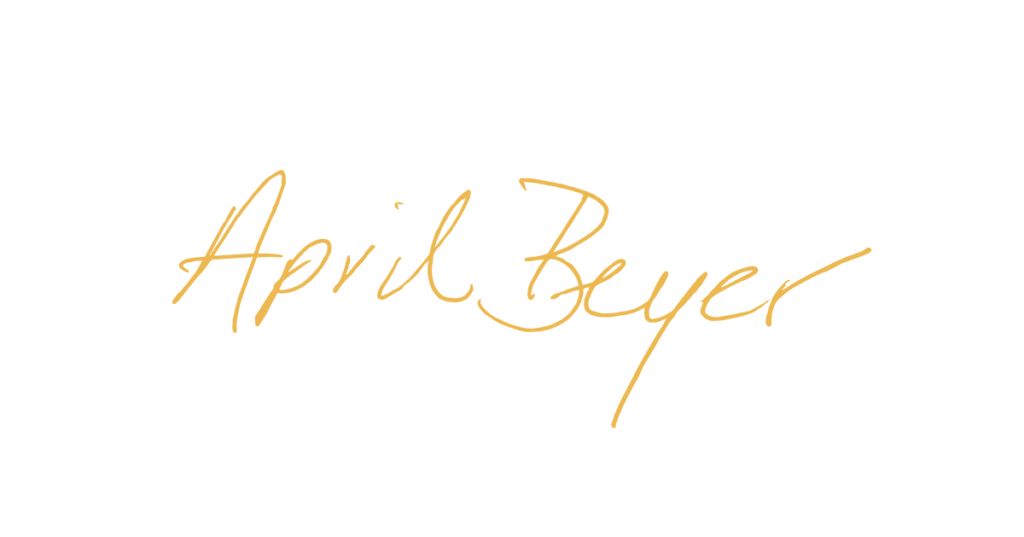Stepping into a leadership role as a woman often feels like you’re juggling more demands than there are hours in the day. One moment, you’re handling major contract negotiations or steering your team through a crisis; the next, you’re expected to roll out a big strategic initiative. In each of these moments, you have to earn people’s trust and cooperation almost immediately. The pressure can be intense: everyone’s looking to you for clear decisions and unwavering confidence. At the same time, you want to be down-to-earth—someone your team and stakeholders find genuine and easy to connect with.
For women, the stakes can feel especially high. Despite the strides we’ve made, women in leadership roles still contend with societal expectations and biases, sometimes running into skepticism about our abilities or leadership styles. Corporate decision-making tables can be rife with subtle (and not-so-subtle) cues that question whether our voices are truly valued. Add the element of a “high-stakes” environment—a looming deadline, a major conflict, a crisis—and the intensity of those pressures multiplies.
When I work with female executives in my relationship coaching and consulting practice, I see it time and again: brilliant, high-achieving women who have no trouble articulating their expertise, yet who struggle to open lines of open communication with their teams, senior management, or board members in moments of stress. They know that establishing trust is crucial not just for the immediate task but also for long-term leadership effectiveness. However, the question is always: How do I do this quickly and authentically when the pressure is on?
The Importance of Building Rapport and Trust in High-Stakes Scenarios
In personal relationships, building trust is an ongoing process. We invest time and effort in getting to know one another’s values, quirks, and communication styles. In corporate settings, especially when the stakes are high, we seldom have the luxury of time. We may find ourselves thrust into crisis management or a sensitive negotiation, where establishing trust and rapport now is non-negotiable. Without trust, deadlines get missed, negotiations stall, and organizational morale plummets.
Rapport is the bridge that allows for genuine collaboration. It’s the feeling that says, “I see you, I understand you, and we’re in this together.” When rapport is missing, leadership can feel like pushing a boulder uphill every decision is met with resistance, every instruction is questioned. But when rapport is present, even tough news or big demands are more readily accepted because the foundation is strong.
Female leaders often have an innate ability to intuit the emotional undercurrents of a room an asset that can be incredibly powerful in building that bridge of trust. Yet, these same leaders might struggle with balancing that empathetic side with the authoritative stance required in corporate settings. It’s a delicate dance: come across as too empathetic, and risk being perceived as “soft.” Display too much authority, and risk being viewed as “intimidating.” The key is finding a personal leadership style that blends empathy and authority in a way that feels authentic to you.

The Role of Emotional Safety in Fostering Connections
To build trust quickly, your colleagues, clients, or team members need to feel emotionally safe. Emotional safety means they believe they can express themselves openly without fear of judgment, ridicule, or retribution. In high-stakes corporate scenarios, people often worry about the repercussions of sharing concerns or raising questions. They might wonder, “If I speak up, will it jeopardize my standing in the organization?” or “What if I make a mistake and look foolish in front of the boss?”
These concerns are real, and they can stall important decisions or block creative problem-solving. As a female leader, you have a powerful opportunity to mitigate these fears by modeling vulnerability and acceptance. Vulnerability doesn’t mean oversharing personal struggles; rather, it’s the willingness to admit that you don’t have all the answers and the invitation to collaborate and learn together. A good rule of thumb is to remember to be personable at work, not personal.
Here’s an example: Let’s say you’re leading a mission-critical project on a new technology rollout. Instead of presenting yourself as the “all-knowing expert,” you can transparently acknowledge, “This is uncharted territory for all of us. I’d love to hear your perspectives. Here’s what we know, here’s what we don’t yet know, and I appreciate any insights you might have.” This simple gesture shows respect and opens the door for collaborative thinking, while still placing you in the role of a decisive leader who seeks solutions.
Why This Matters in High-Stakes Situations
In high-pressure environments, the typical default is to close ranks and adopt a protective stance. People become more guarded, especially when there’s a lot on the line—revenue, reputation, or career advancement. By understanding the psychology of trust and rapport, you can actively disrupt that default. You can show up in ways that diffuse the sense of threat and replace it with a sense of safety and shared purpose.
Whether you are heading a crisis management team or presenting to the board for a critical decision, the psychological underpinnings of trust remain the same: people need to see that you are both competent and caring. To me, this combination is the magic of being an incredible female leader. Competence addresses their rational concerns about whether you can solve the problem; caring addresses their emotional concerns about whether you value their input and well-being. We shouldn’t have to make a choice between our leadership and our humanity. They can and should go hand in hand.
Fostering Trust Through Transparency
A foundational element of rapport and trust-building is transparency. In high-stakes corporate settings, where every decision can have significant financial or reputational implications, people crave honesty—especially from their leaders. When you communicate openly, you effectively demonstrate that you respect your audience enough to share both successes and challenges.
Communicating Challenges and Solutions with Honesty
In a fast-paced, high-pressure environment, it can be tempting to put on a brave face and avoid discussing difficulties for fear of appearing weak or uncertain. However, what often happens is the exact opposite of what you intend: when people suspect you’re hiding something, their trust in you erodes.
- Acknowledge Reality: If budget cuts are imminent or the project timeline is in jeopardy, be forthcoming. “I want to level with you about the budget. We’ve seen unexpected overruns, and this will require careful prioritization to stay on track.”
- Show the Path Forward: Once you acknowledge the challenge, offer a clear path forward. “Here’s what we’re considering to address these overruns, and I’m open to ideas on how we can optimize further.”
This approach not only prevents rumors and speculation but also positions you as a decisive leader who respects the team’s ability to handle the truth. As much as possible, encourage an atmosphere where team members feel comfortable surfacing issues early. Solving problems collaboratively fosters a collective sense of ownership and accountability.
The Importance of Follow-Through and Reliability in Trust-Building
Transparency is not solely about what you say; it’s also about what you do after you say it. If you promise to circle back on an issue by the end of the week, do it. If you commit to seeking out additional resources for the team, follow through promptly. Inconsistency between words and actions is a surefire way to break trust.
- Document and Track: For major deliverables or promises, keep a transparent record. Let people see that you are serious about fulfilling your commitments.
- Communicate Progress: Even if you don’t have a final answer, provide updates. “We’re still in talks with the IT department regarding additional resources, but I’ll have more details by next week.”
- Own Mistakes: If for any reason you can’t deliver as promised, own it. Apologize for the delay or misstep and provide a new, realistic commitment.
In a high-stakes scenario, consistency and reliability can be your most potent leadership assets. When people see that your actions line up with your words, they become more inclined to trust you—even if the news is not always good.
How Transparency Differs Across Levels
It’s important to note that transparency doesn’t mean “oversharing.” The level of detail you provide should be tailored to the audience’s role, stake, and need-to-know basis. For instance, you might share more budget-specific numbers with senior management than you would with a front-line team. However, the principle remains the same: be honest, consistent, and clear in how you communicate.
At an executive level, transparency might involve discussing high-level risks and strategic priorities. At a manager level, you might focus more on project timelines, resource allocation, and performance metrics. The key is ensuring that at every level, people feel informed about the aspects of the business that affect them, as well as about your leadership intentions.
Building a Culture of Transparency
Ultimately, fostering trust through transparency isn’t an isolated practice. It needs to be embedded in the company culture. Encourage your teams to practice open communication with each other, not just with you. Lead by example: if you expect honesty, model it. If you want people to admit mistakes and take responsibility, show them how it’s done.
When everyone feels safe to voice their insights, express concerns, and admit limitations, organizational agility skyrockets. Problems are solved faster, collaboration is heightened, and the team’s morale gets a much-needed boost especially when dealing with high-pressure tasks.
How Leaders Can Implement These Strategies in Their Next High-Stakes Situation
As you prepare for your next big pitch, merger discussion, or crisis management scenario, set an intention to focus on trust-building from the get-go. Map out how you will demonstrate empathy, plan your transparency talking points, and think about which cultural or personality nuances might be in play. Then, go in with the calm confidence of a leader who knows that true influence starts with genuine human connection.
Remember: Trust is built in moments both big and small. The way you handle everyday conversations—listening actively, following through on commitments, and addressing issues with honesty—lays the groundwork for how people will trust you in major, high-stakes situations. Make rapport your leadership currency, and watch how it pays dividends in loyalty, productivity, and meaningful professional relationships.
Are you ready to transform your leadership approach? Take my Relatability Assessment and discover how to connect more meaningfully with your audience.























